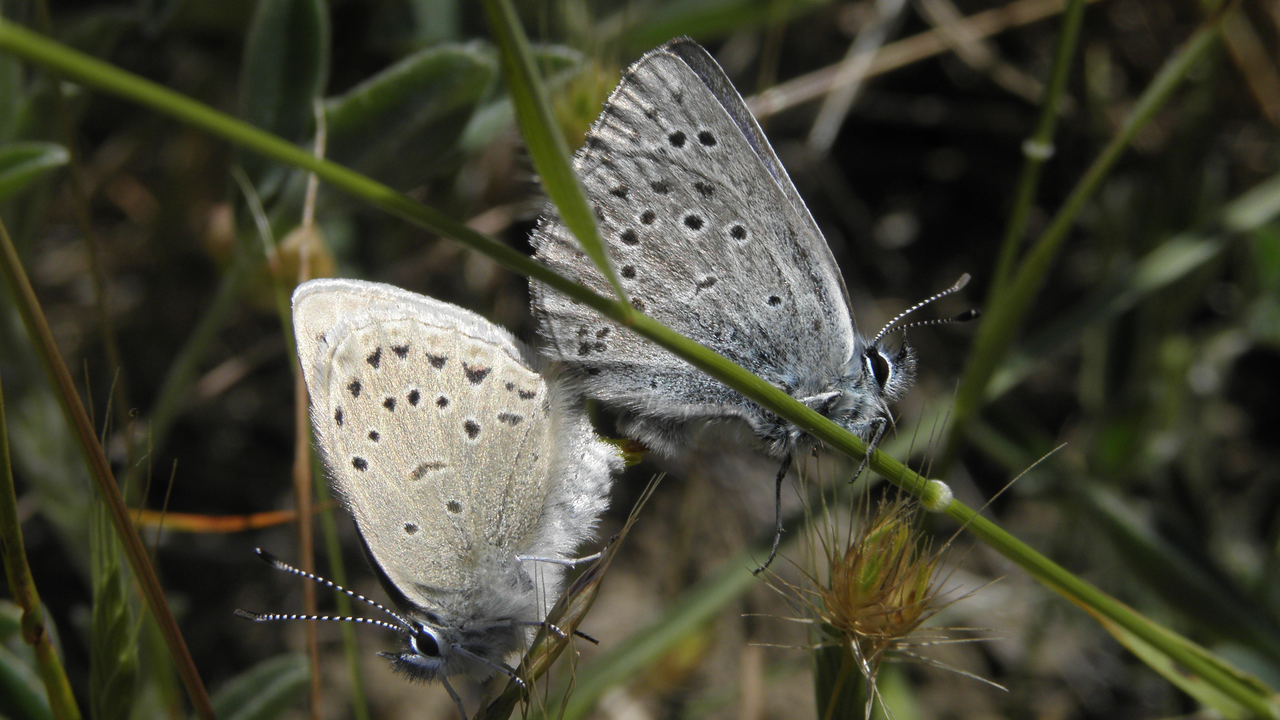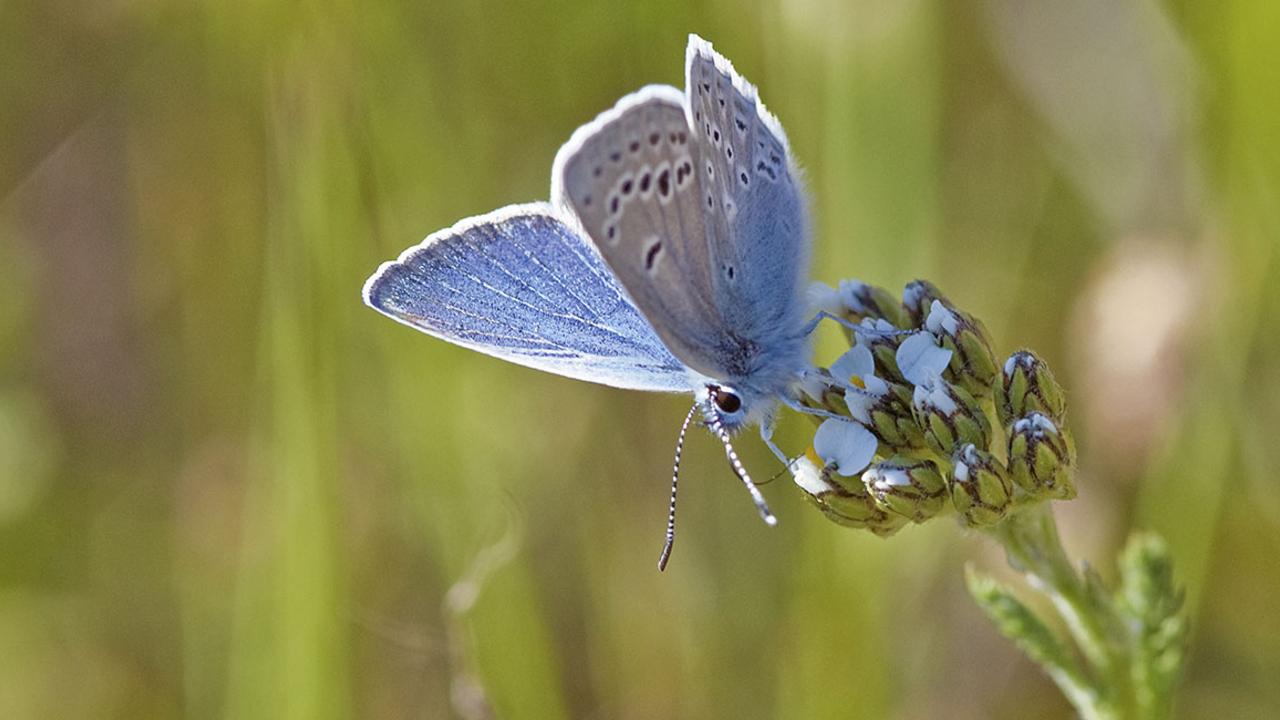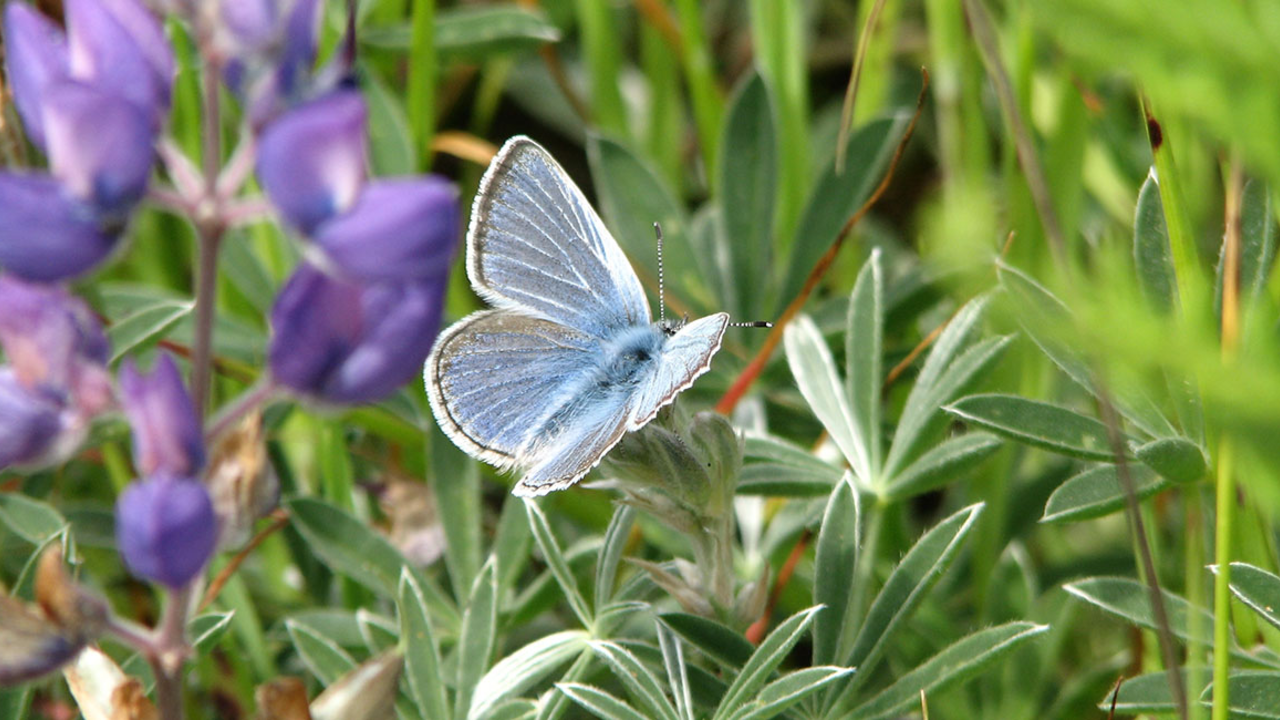New seeding approach changes game for Mission blues

NPS
Thanks to experimentation and perseverance, park biologists have made a breakthrough towards establishing resilient wild lupine populations, the critical host plant for Mission blue butterflies.
The parks have long worked to restore habitat for federally endangered Mission blues in San Mateo parklands like Milagra Ridge. This is a crucial part of the Mission blue translocation project, which aims to give the butterflies a boost by moving individuals from well-established populations to suitable habitat in other areas of the park.
But unfortunately, fungal pathogens have caused a die-off of silver lupine plants, the most common lupine species in our park. Mission blues rely on lupine throughout their life cycle: lupine leaves provide nutrients for growing caterpillars and a venue for adults to find mates and lay eggs. Without lupine, butterfly populations won’t bounce back.
Facing worrisome declines, park biologists diversified planting efforts to include summer lupine, another native lupine less common in the park that also supports Mission blues. Luckily, summer lupine is not affected by the pathogen infecting silver lupines.
Still, even summer lupines need some prep work to survive in the wild. Biologists experimented with different techniques and planting locations to beat the odds. They found a winning combination: pretreating seeds in a rock tumbler (which weakens the seed coat to promote germination) before planting seeds directly on a relatively undisturbed grassland or scrub landscape. This shift away from the time-intensive process of growing plants in the nursery for outplanting in the field, along with summer lupine acting as a “buffer” against pathogens, is yielding promising results.
Going forward, biologists will continue this approach and expand efforts to Sweeney Ridge in preparation for future Mission blue translocations.
Conserving endangered species often feels like an uphill battle, but stories like this illustrate how persistence and creativity can make all the difference.


